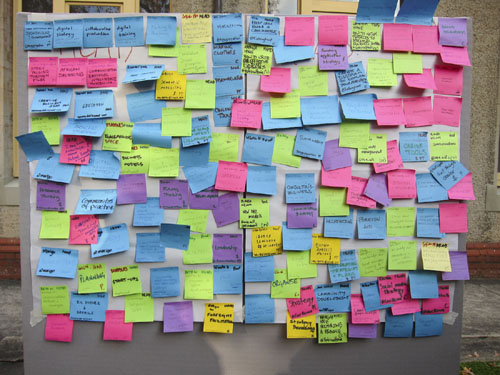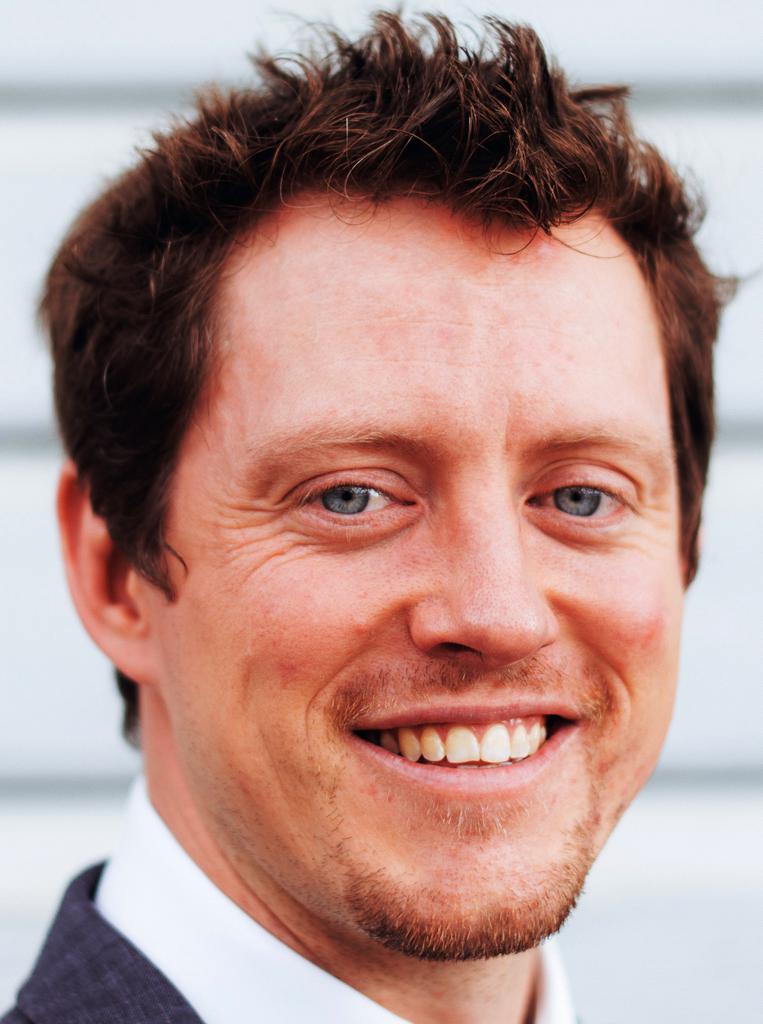Harnessed fully, there are more talents and resources within any small group of passionate citizens than are actually needed to manifest deep social change. It is just a matter of how willing we are to step back and see things through a lens of strengths and possibilities, and how creatively we can bring our multitude of capabilities to light.
In the 21st Century, many of us are more ‘connected’ than ever, and whilst we live within economic and ideological systems that thrive on homogenization, we only have to consider the passions, knowledge, and skills of any one individual to recognize the immense and diverse assets waiting to be unleashed.
One way I’ve explored doing this involves employing a simple technique called asset mapping. In the case below – appropriate for any number of participants – this involves mapping the passions, knowledge, and skills that participants in any group already possess. I have successfully trialled this method with face-to-face gatherings, but the template can be easily customised for an online process or expanded to explore issue-oriented, organisational, or team-specific resources. It is essentially a form of real-time crowdsourcing; except, in this case, every bit of data is of potential, perpetual value to all involved.
First up, here is one example of an outcome from this process, so that you know toward what you might be working!

The 10 Steps for Facilitating Asset Mapping:
-
Gather the following materials: nine colourful Post-it notes for every participant (e.g. 225 for 25 people), a pack of colourful sticky dots for every 10 participants, three big sheets of butcher’s paper for every 25 participants, and enough marker pens/pens for the group.
Tips: To produce the most visually appealing of asset maps, go for a range of colours (of the lighter kind) when selecting Post-it notes. For pens, note that there is an ideal tip thickness that allows for legible writing and reading from a distance. Also, if needed, you can substitute words or symbols for sticky dots.
-
Assemble your group in a way that allows participants to partner up, and ensure each has something with which to write, a total of nine Post-it notes, and access to sticky dots for a little later on.
Tips: I have found this exercise works well around tables where people can write on the Post-it notes most easily. Ideally, participants will have a mix of colours within their notes, but as long as there is diversity amongst the group, it does not really matter. (It is okay for a participant to have all one colour or groups of colour with their Post-it notes, as long as there is diversity in the room and across the asset map categories – Heart, Head, and Hand.)

-
Explain to the group the asset mapping process (i.e. the remaining six steps).
Tips: If you would like to introduce asset-based thinking to the group, you can read a quick introduction here. In addition to outlining the process, I would suggest explaining the desired outcomes to the group, as well as how long the process should take. (I have found 90 minutes to be plenty for a group of up to 100.) I suggest highlighting that participants need only share that with which they are comfortable, and that a gift shared with one’s partner does not have to be recorded on a Post-it note. (There is no obligation to place anything on the butcher’s paper later on, but the final maps are accessible to all participants, irrespective of whether they contributed specific gifts.) Perhaps also highlight that this is, in part, a trust-building exercise undertaken on the basis that every person’s shared offerings are respected and not open to exploitation.
-
Ask everyone to write the words Heart, Head, and Hands in the top left of the Post-it notes, using one term per note, and three Post-it notes for each category.
Tips: So that they can be easily read from a distance, consider suggesting that participants print their words, rather than use script writing.
Participants should now have a range of Post-it notes in front of them, resembling the following (three of each):
-
Allowing 15-20 minutes for this next step. Ask participants to first record up to nine gifts – ideally three each of the Heart, Head, and Hands – with each gift written clearly in the centre of the Post-it note listing its relevant category. Participants are then invited to share their gifts with a person next to them in whatever way they desire. Explain the gifts as follows:
-
Heart: ‘I am passionate about…’
-
Head: ‘I have some knowledge around…’
-
Hands: ‘I know how to…’
Model the practice yourself to the group, e.g. “I am passionate about caring for animals; I have some knowledge around how to cut a mango properly; and I know how to build a shed using timber and rope.”
Tips: Starting with the heart is the easiest way I have found for people to open up – everyone is passionate about something! Encourage participants to go beyond what they think people might expect them to say are their gifts – the more random the gift, the more likely it will be unique and, therefore, of even greater value to the group. That said, remind people that every gift is welcome in the space and that there is no obligation for people to share nine or, for that matter, any gifts. If participants seem lost, encourage them to start with the exact sentences, i.e. “I am passionate about…”.

-
Ask participants to add a coloured dot in the top right hand corner of each Post-it note relevant to the amount they are willing to share. Distinguish between a full-time, part-time, and casual offering.
Tips: I use the traffic light colours for dots. Here, red means casual, orange or yellow means part-time, and green means full-time – you can obviously improvise, as long as you make it clear to all involved. Consider modelling an example of each, e.g. casual might mean you can contact me once a year or every so often; part-time means I’m open to weekly/monthly engagement around this; full-time means contact me at any reasonable hour! It also helps to put up a super-sized example of a completed Post-it note somewhere clearly visible to the group.
-
Ask participants to write their first name and best contact details along the bottom of the Post-it note.
Tips: If relevant, remind people of the range of contacts from which they can select one to share, e.g. Twitter handle, e-mail, phone number, Skype name, or postal address. Let people know that they can write different contact details for different gifts.
-
Ask participants to add a ‘$’ to the left of the sticky dot if they would like to charge for the use of their gift.
Tips: Encourage people to be honest about whether they would like to charge and remind people that it will be up to those involved to negotiate costs when each exchange occurs.
Participants should now have a range of post-it notes in front of them, resembling the following:
-
Ask participants to stick each post-it note on the relevant piece of butcher’s paper (Each should be labelled as Heart, Head, or Hands.) that will be on the ground or hanging nearby. Offer people a good amount of time to review what goes up.
Tips: Best to have the butcher’s paper affixed to a wall or pinboard in advance. Make sure the place where the assets will be displayed is accessible to a roving crowd.Trust that magic will now evolve. Encourage people to bathe in the beauty of their shared assets, but also record immediately what offers they might like to follow-up!
-
Crowd-source someone from the group who is willing to put all of the assets into a spreadsheet and distribute if to the group electronically or through a printed version.
Tips: The new databasing volunteer should have everyone’s contact details from the bottom of the Post-it notes, but if participants have not listed an e-mail address (and for those who chose not to share their gifts publicly) you may want to facilitate a means of sourcing these at this point. Check also if anyone does not wish to be contacted with a copy of the maps. And do not forget to remind the new volunteer to put people’s addresses in ‘blind carbon copy’ if using e-mail!
Asset mapping offers a simple, fast and inexpensive way to resource a project, organisation, or movement. Because it focuses on what already exists, it is positive in nature and is great for unearthing latent potential. Once in a database, an asset map is easily updated by people themselves, and also presents a medium through which people can maintain meaningful connections – it’s actually collaborative living in action! Perhaps most importantly, its informal nature facilitates the strengthening of connections and trust beyond casual acquaintances. But, then again, that’s a common trait to most communal activities that are free and fun!









